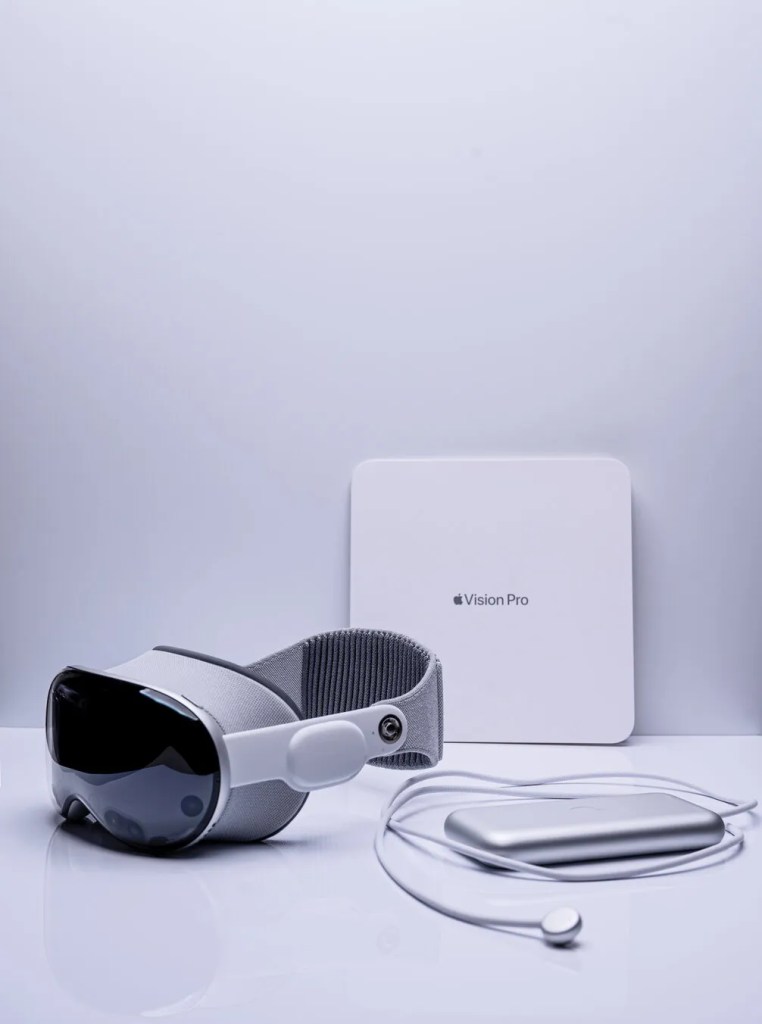Apple released its Apple Vision Pro with mixed-reality cutting-edge technology. It is seamlessly blending digital content with physical space. But will it be a hard sell to most? The price alone is quite hefty. Let’s delve into some pros and cons of this latest Apple invention.
Let’s start with the pros of Apple Vision Pro. Apple Vision Pro is designed to customize the size of your head. Those who wear glasses can get prescription lenses to insert. Instead of having a device and always hurting the neck looking down, Apple Vision Pro navigates by using eyes, hands and voice. Simple hand gestures or voice commands are used to scroll and select. Move the screen around the room to put on the ceiling or immerse yourself completely.
Photos on Apple Vision Pro are outstanding! The room dims around the picture, allowing the complete focus of the image. Panoramas become life-sized! Spatial videos peer as if you were back in the moment. Movies and TV scale the screen to take over the space around you.
When working, create your workspace with various tabs and documents pulled up where you want around you. Music becomes a 360-degree experience with audio pads positioned close to the ears to deliver spatial audio while keeping awareness of the surroundings. Environments is a featured app that transforms the space so apps can extend beyond the room’s dimensions. Choose from a selection of beautiful landscapes or a personal movie theater. Mindfulness is now entirely immersive. A new app for Apple Vision Pro specifically is Dinosaurs, which allows you to experience life-size prehistoric dinosaurs and their friends.

Now for the cons of Apple Vision Pro. The price is quite extreme, and even more than Apple’s latest Mac Book Pro, Apple Vision Pro is US$3500 or US$291.58 per month. However, according to The New York Times, it will cost much more after additional add-ons.
Let’s not deny the “weird factor” of these goggles. Head-mounted displays are not for everyone. Most do not want to wear a ski-goggle helmet while walking around in public. This will make selling harder since the fear of looking foolish in public creates a significant barrier to adoption.
For many people using Apple Vision Pro for work, relying solely on eyes, touch, and voice could be problematic. Most will want a physical keyboard and mouse since hand placement could be difficult with the virtual keyboard. Apple’s voice assistant Siri also is not as advanced as some AI techs such as ChatGPT.
While using FaceTime, the other person will see a 3-D-created avatar called Persona. Most will attest that this is a very unflattering portrait, but Apple says this is still an unfinished feature. It is slightly heavier than other virtual headsets, and the battery life of Apple Vision Pro supports only up to two hours.
This is just the start of head-mounted displays and computers, which will eventually become our future.
Are you ready to embrace this new reality?